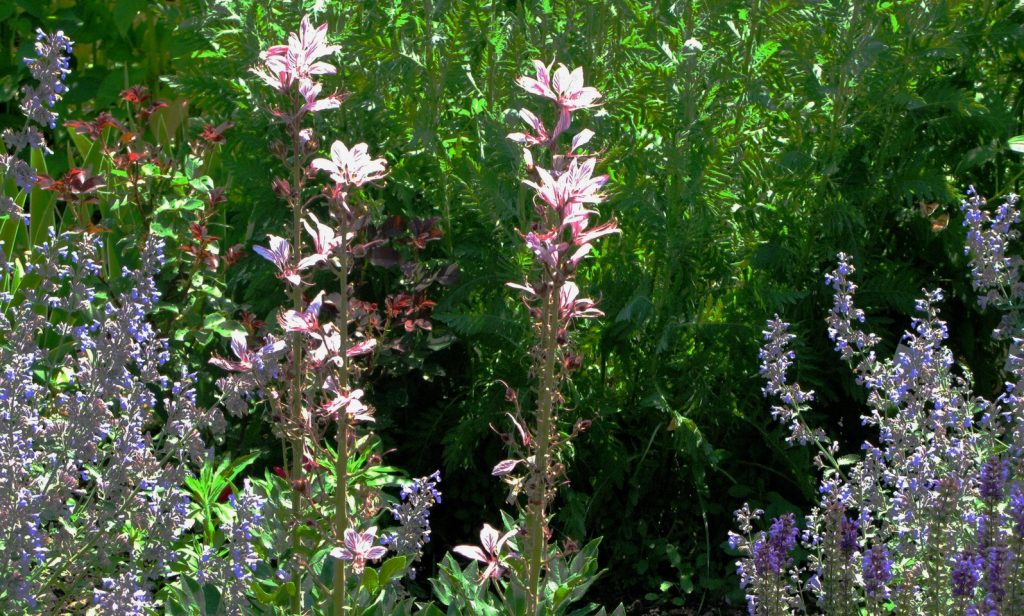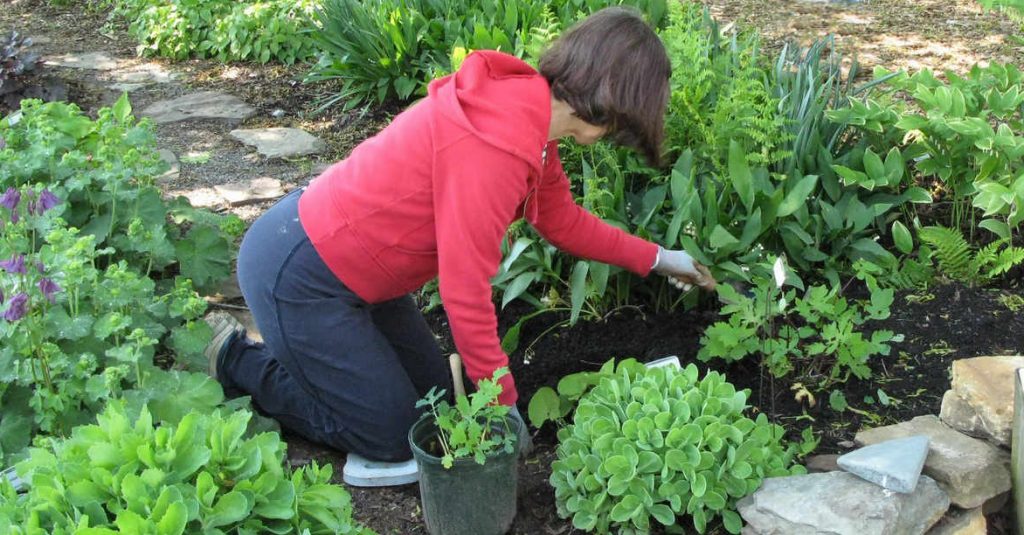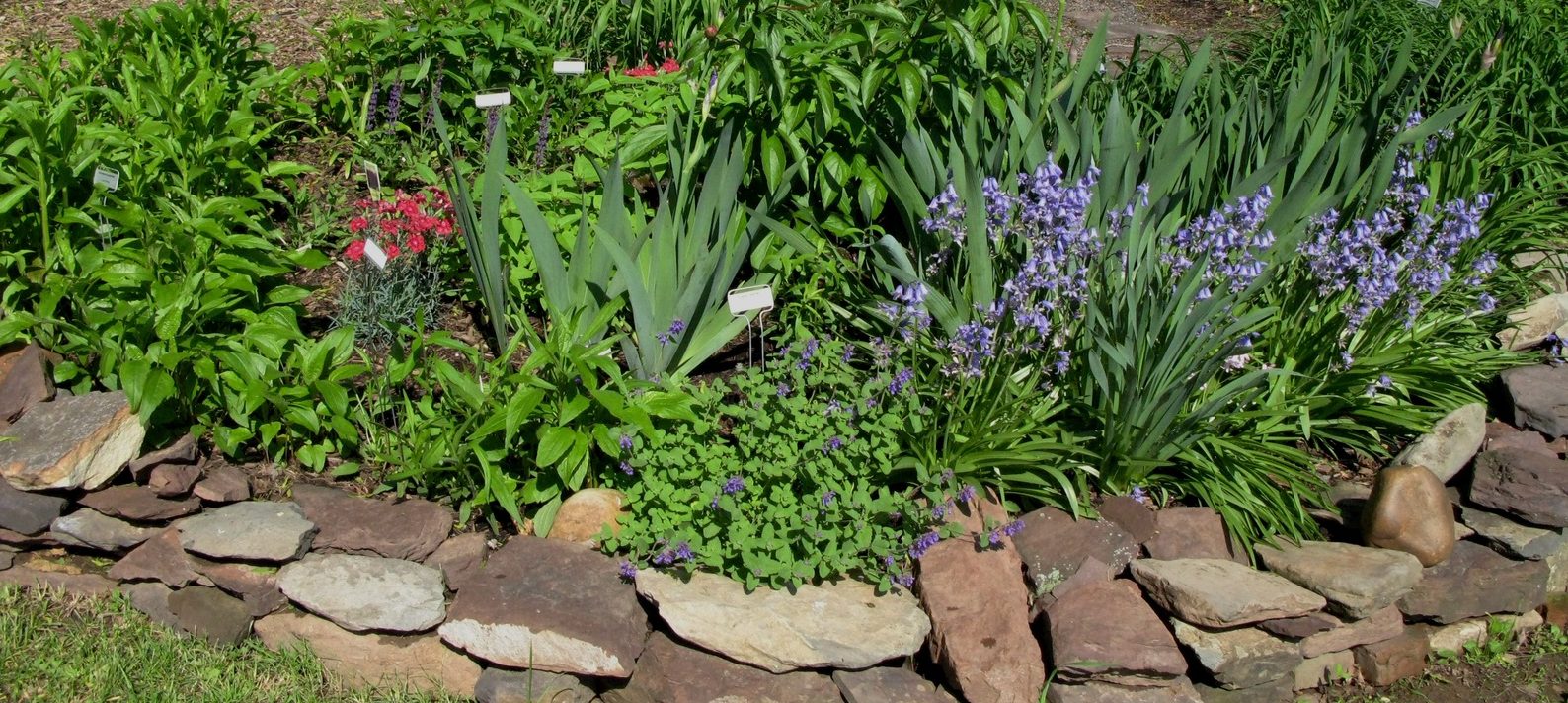
Stacks of lush spring plants are hard for just about any gardener to resist! Before buying, don’t forget to read plant labels and make sure conditions in your garden and the plant’s cultural requirements are a match. (Photo by Joe Scarlata)
Plant sales abound this time of year and whether you’ve been shopping at neighborhood plant swaps or browsing through local nurseries — you know how energizing the experience can be. But once you arrive home, do you ever find yourself saying, “Now what?” If so, we’ve got you covered! We love plants sales too, so we’ve put together a few Master Gardener “Tips of the Trade” that will have you digging in to this– the most optimistic of garden seasons–with excitement and confidence.
It’s planting time! The frost free date in central New Jersey is on or after May 10 –so now’s the time for gardeners to get growing.
Ready or not: What to do if planting’s on pause…
If you’re NOT planning to transplant your new plants immediately, remember to water them as needed and protect them from animals and harsh elements such as frost and wind until you are ready to plant them.
For the best results for all of your garden plants–as well as your lawn–you should know the pH and nutrient level of your soil. To do this, have a soil test run. You can stop by the Extension Office to purchase a soil mailer, or call the Extension Office at 609?989-6830 for more information.
Planting 101: Steps to help your new plants thrive
The following tips apply to most newly-purchased plants. But, be sure to check plant labels first for any variety-specific instructions.
SITE CONSIDERATIONS: Read plant labels carefully before selecting planting sites. Plants have different requirements for sun/shade, soil condition and drainage.

Individual annuals and perennials have different requirements for sun, shade, partial sun, soil quality, and drainage. When deciding what plant to put where, also consider a plant’s mature height and whether you will you be able to see and enjoy it among its garden companions. (Photo by Joe Scarlata)
Also, since plants have different growth patterns and rates of growth, consider the spread and the height of the plant at maturity.
In addition, two other factors should be considered: visibility (planting in order for the plant to be seen and enjoyed) and accessibility (planting in order to for the plant be accessible for fertilizing, dead heading and/or pruning).

Make sure to remove weeds and debris before planting. It’s also a good idea to add some organic matter–like compost –into the soil to help new transplants thrive. (Photo by Theodora Wang)
SOIL PREPARATION: Remove all weeds and other debris from the planting site. Loosen soil for good root growth and mix in organic matter (compost, well rotted manure or peat moss) to amend the soil. If a recent soil test was performed, refer to the report for information regarding recommended lime and fertilizer. If no soil test has been done, fertilize with 10-10-10 at 2 lb. per 100 square feet, or follow the label directions on a fertilizer for flower or herb gardens. Spade or rototill amendments to a depth of 6-8 inches for most annuals or perennials.

The best time to install your plants is on a cloudy day, which reduces the chance of sun and/or heat stress on new transplants. (Photo by Joe Scarlata)
PLANTING: Hardy perennials, trees and shrubs can be planted immediately. (The frost-free day in central New Jersey is on or about May 10.) If tender plants– aka annuals– are threatened by frost, be prepared to cover them.
Plant at any time on a cloudy day, or early morning or late afternoon on a sunny day. Prepare a space at least twice the size of the plant container and almost as deep. Remove the plant from the container and loosen or cut the roots slightly to encourage growth. Plant at the same depth as the plant was in the container. Gently settle soil around the roots, being careful not to leave air pockets around the roots. Water thoroughly.
MAINTENANCE: Water early in the morning (preferable) as plant species require. Use a rain gauge to determine how much rain had fallen and adjust watering schedule accordingly. Mulch will help maintain soil moisture, temperature and deter weeds. Mulch depth should never exceed two inches.
GARDEN HELP: For more planting information, or if you are having plant, tree or lawn problems, please call the MASTER GARDENER HELPLINE (609-989-6853), Monday through Friday from 9:00 a.m. to 3:00 p.m. You can also visit our website at www.mgofmc.org for more information from the Rutgers Cooperative Extension and Barbara J. Bromley.

Looking for inspiration? Stop by Mercer County Educational Gardens which feature a variety of beautiful plants– all of which are proven to thrive in our area. (Photo by Joe Scarlata)
GARDEN INSPIRATION: Don’t forget to visit our Educational Gardens this summer when the gardens are in their full glory, the flowers are in bloom and the butterflies are visiting. For information about coming activities, check out our Events page.
Happy planting!
More info:
